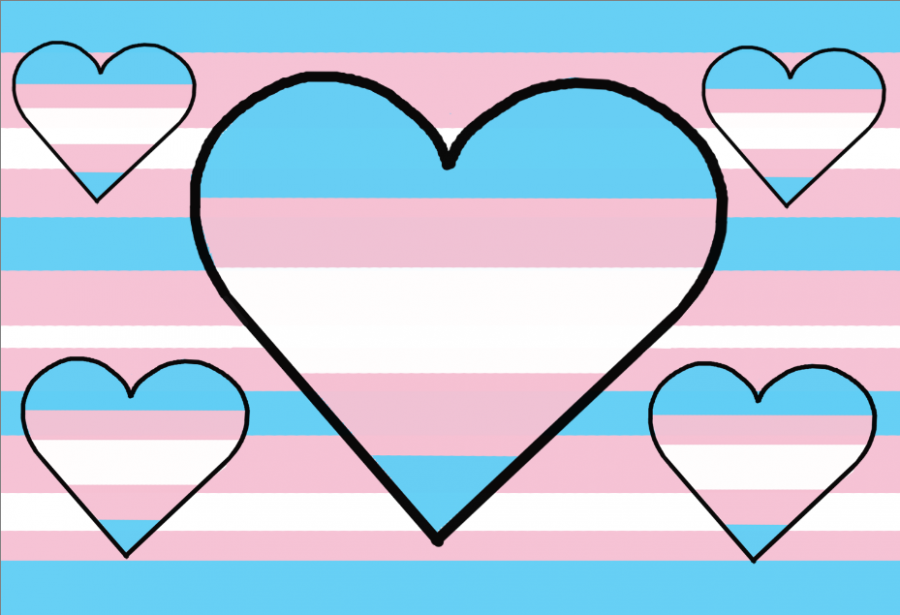OPINION: Transgender people continue to face problems
The trans rights struggle is far from over
Trans people are still struggling for healthcare, safety and respect in 2020.
June 24, 2020
What rights do transgender people have in today’s America? In the nation’s discriminatory climate, it can be difficult to know what rights trans people are actually afforded. In fact, I found it a lot easier to discuss the discrimination they face over what rights they have.
Chris Kissas, recent Burlington-Edison High School graduate, wrote in an email that she believes discrimination plays a part in preventing trans-folks from getting jobs or participating in school extracurriculars, especially sports.
“As a transgender woman, I could say that we do have rights overall because I am technically able to do just as much as anyone else,” Kissas wrote in the email. “However, just because we have rights, it does not mean that they aren’t overlooked.”
Auden Rawls, sophomore in Reed College, wrote in an email that transgender rights are less stable.
“[The] major difference between our [transgender people’s] rights and the rights of cisgender people is that ours are always at risk,” Rawls wrote.
This is very common among groups that are discriminated against. Their lives are unstable due to the stigma and fear people have, which in turn makes those groups wonder if they will wake up with another right gone.
The recent decision of President Donald Trump to rollback LGBTQ+ healthcare is one of those rights being taken away. Medical professionals would be allowed to refuse care to anyone who is, or who they think is, LGBTQ+.
When former president Barack Obama signed the Affordable Care Act preventing discrimination in medical care, one in five transgender people were being turned away by medical professionals. Now, in the midst of a pandemic, LGBTQ+ people are at a much higher risk for a lack of medical support and even death.
While this is extreme, there are many other things that affect the day-to-day lives of trans people.
Kissas wrote another problem is purposeful misgendering. While some people misgender by accident, others do it to be malicious and just plain rude. Kissas wrote that there is a generalization and misconstrued conception of what transgender people look like.
“Most bigoted people think that we look like a ‘man in a dress,'” Kissas wrote.
Male to female (MTF) transgender people shouldn’t be referred to as a “man in a dress” because it is a stereotype, she said, and transgender people who are MTF are in fact females, not males.
Misgendering is one causes of the decline in the mental health of transgender people. Feeling one gender while being called another takes a toll on someone’s psyche. Imagine being called the wrong pronouns all the time on purpose — it would be uncomfortable and cause unhappiness.
I think that bigotry stems from the fact that being trans is something cisgender people aren’t always familiar with and are scared to talk about. It makes sense; being trans is different and from an outside and uneducated perspective, which can make way for negative assumptions.
For example, many people think that being transgender is an excuse for predators to sneak into women’s bathrooms to assault women. While this is a valid concern, it is misplaced anger and confusion because the problem is not with people who are trans, but with predators.
Many people like Kaitlin Bennett, a right-wing media personality, are incredibly concerned with the comings and goings of transgender people in bathrooms.
Bennett often asks women, “Wouldn’t it make you uncomfortable if someone in the stall next to you had male genitalia?” To which many respond, “How would I know they had male genitalia?”
I have to say, I don’t remember a single time where I wondered about what genitalia the person in the stall next to me had, nor do I care. Bathroom stalls are outdated and bathrooms with proper doors should be the norm, but that is for another day.
I would also like to mention the experiences of transgender people of color. Both Rawls and Kissas are White and said they don’t speak for trans of color.
“I speak from a place of great privilege as a White transmasculine individual,” Rawls wrote. “A transgender person of color has a completely different perspective and faces different struggles than I do.”
While it is easy to group all transgender people together, there is an obvious difference between the experiences of White and trans people of color.
Many transgender people are bullied by their peers and have driven many trans kids to suicide. However, the rate of transgender murders between 2010 and 2016 showed that 2.9 percent of victims are white trans individuals while 95.7 percent of transgender murder victims were trans people of color. This is a stunning difference and is just one look of what trans people of color endure.
While transgender people are allowed some basic rights, there is obvious hardship and discrimination that prevents trans people from living their lives without fear of violence and governmental inaction.
While this is an incomplete list of things that transgender people go through, it is a small way to begin learning about their experiences. Some other places you can go for more information are the GLAAD Transgender FAQ site, the Human Rights Campaign and Planned Parenthood.









